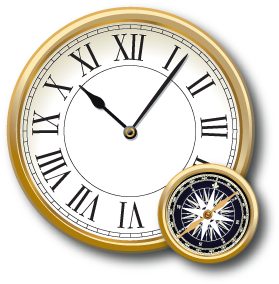America’s earliest contributions to navigation.
Intent upon contributing to the art and science of navigation, civilian and naval innovators worked to lessen the dangers of seafaring by seeking better ways to find time and place.
Major contributions included:
A Navigation Encyclopedia
The New American Practical Navigator has served American sailors since 1802. Popularly known as Bowditch’s for its first compiler, Nathaniel Bowditch, it remains a useful handbook of astronomical tables, meteorological information, and navigational instructions.
America's First Sea-Going Chronomenter
This timekeeper was the first American-made marine timekeeper taken to sea. William Cranch Bond, a 23-year-old Boston clockmaker, crafted it during the War of 1812. It went to sea only once, on a voyage to Sumatra (now in Indonesia) aboard the U.S. Navy vessel Cyrus in 1818. Chronometers would not be common aboard American ships until about 1830.
Bond’s chronometer differed from spring-powered English models. Unable to buy British spring steel in wartime, Bond used a French design powered by a falling weight.
Navigation By Line of Position
While nearing land on his way to Scotland in 1837, Captain Thomas Sumner of Boston had an insight that made an enduring contribution to navigation.
Cloudy weather permitted only one sighting on the Sun. With that limited information, Sumner made three different calculations based on estimates of his latitude. Plotted on a chart, the results lay along a straight line. He realized that any ship seeing the Sun at the same altitude in the sky must be located somewhere on that line. This was confirmed by sailing along that course until a lighthouse was sighted on the coast.
Sumner published his method for determining what was later called a “line of position” in 1843, and it became standard practice.









